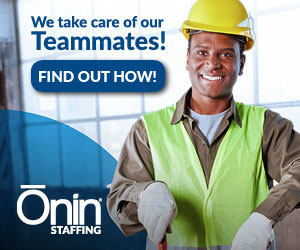Imagine: It’s Christmas Eve and you still have presents to wrap. A small piece of jewelry. A child’s bicycle. A sweater. A drum set. Theater tickets. Some power tools. You want to surprise your family with these gifts in the morning, but all you have is a roll of wrapping paper, some tape and a pile of 8 x 10 boxes. How are you going to wrap these differently-sized gifts with these uniform supplies?
Every day across the globe, hiring managers attempt this same packaging feat when they sit down to write a standard job description. The only difference is they define the 8 x 10 box and then look for custom-tooled humans to fit neatly within them.
While the job description has been the anchor of the hiring process for decades, it’s never been a good proxy for real human talent and is only an approximation of what an organization really needs in both the short and long term. In the fast-changing future of work — where workforce management is a process of continually aligning talent to current and changing needs — the written job description is virtually useless.
It’s time to let the job description go.
History and Evolution of the Job Description
Job descriptions have been around for centuries, evolving from hand-painted “Help Wanted” signs in shop windows in the 1600s to the more specific “Men Wanted” ads in newspaper classified sections that emerged in the 1800s and on to the detailed and searchable listings of Internet-based job boards in the 1990s. In the late 1800s, job descriptions even got a bit of science to back them up. Today, digital technology and algorithmic tools claim the potential to remove any bias of race, gender and culture in job descriptions on sites like textio.com and others.
In his quest to improve industrial efficiency, Frederick Winslow Taylor began studying manufacturing, specifically steel processing, in the 1880s. In so doing, he established the field of scientific management, the theory of management that analyzes and synthesizes workflow through the standardization of tasks.
By studying and codifying work processes, Taylor gave birth to job design and the modern job description. These descriptions worked well when most jobs were relatively static, change came slowly and the economy was ruled by what John Hagel of multinational professional services network, Deloitte & Touche, calls “scalable efficiency.” That is, companies win by quickly scaling a known process and outcome.
Today, however, modern technology can absorb many explicit tasks that achieve known results. In other words, anything mentally routine or predictable may be done by an algorithm, leaving the less predictable, creative and insightful work to humans.
The funny thing about “less predictable work” — it’s difficult to codify in a straight-forward, easily-posted job description. To understand the conundrum we are in, it is important to understand how we got here — through our industrial revolutions.
Fourth Industrial Revolution: Rise of Automation & Artificial Intelligence
The first industrial revolution gave us steam power. The second, electricity, division of labor and mass production of manufacturing (where the job description emerged en force). The third gave us computerization and the automation of routine physical labor in manufacturing. The fourth industrial revolution is merging the digital, physical and biological systems, leveraging technologies such as autonomous vehicles, additive manufacturing, 3D printing, artificial intelligence and personalized medicine.
If the third industrial revolution pushed us to hyperfocus on specialization and embrace studied expertise, the fourth industrial revolution propels us back towards a neo-generalist foundation capable of collaborating with machine intelligence to leverage uniquely human skills. Today, some companies, born digital, operate in the fourth industrial revolution reality but most are in the liminal space between the third and fourth industrial revolutions.
Straddling the Third to the Fourth Industrial Revolution
The companies successfully navigating between the third and the fourth industrial revolutions have invested deeply in education because they understand that the future of work is lived in a state of continuous learning.
Research by Willis Towers Watson found that “Ninety percent of digitally maturing companies anticipate industry disruption caused by digital trends, however, only 44% are adequately preparing for it.”
For those preparing, consider the often-cited example of AT&T. The telecommunications company was built with a workforce that met job description criteria that detailed the skills needed to climb telephone poles, dig trenches to lay cables, operate a switchboard to connect calls and manage the thousands of workers who made telecommunications work.
Today, the company supports a workforce of 250,000 people who manage a cloud-based business requiring cybersecurity, data analytics and other technology-dependent tasks – along with the labor-intensive work required to maintain a modern data network. That transition has been anything but easy, yet AT&T took the unprecedented step of investing $1 billion in learning and training programs to lead its workforce into the fourth industrial revolution.
Rather than only reskilling workers for new jobs, the company encouraged workers to also pursue the learning that most interested them, leaving AT&T with the potential to form new jobs around the worker’s capabilities and experiences.
In other words, AT&T didn’t only train workers to fit into new job descriptions. Instead, they built a robust educational infrastructure with a predictive skills and knowledge dashboard that allowed for jobs that fit the abilities and interests of the worker.
Similar to AT&T, future jobs will form around workers, rather than workers being plugged into job constructs built around a list of known tasks, knowledge requirements and set capabilities.
Job Descriptions Become Traps
As the speed of change continues to accelerate, so will future work requirements, and it is anyone’s prediction what skills and capabilities will be needed. Unfortunately, established skills and training programs will be a poor indicator of future work requirements.
Assuming an organization wants to attract and retain the best talent, how do you write a job description for that?
Job descriptions, almost by definition, describe capabilities and attributes without context of a dynamic organization, and almost always, these descriptions are in isolation from other workers. Most importantly, “jobs” as we have known them – tasks to do – will become less and less relevant as workers “do” less and create, collaborate, adapt and learn more.
The reality is this: organizations need to hire for learning agility and adaptability, and they need to hire leaders to inspire human potential.
As marketing guru Seth Godin says, “Managers manage the process and leaders lead the change.” It is all change now and that requires a shift from management to drive productivity to leadership to inspire human potential. The emerging tech tools will drive productivity and efficiency.
From the Value You Bring to the Value You Create
In the era of Taylorism and scientific management, job descriptions made a tremendous amount of sense because value was created by driving efficiency in order to scale effectively. Standardization and repetitive tasks thrived in the slow changes of Taylor’s times. In that era, workers relied on well-earned credentials, and built careers on the value they brought with them to the job. Job descriptions as we know them were well designed to screen for these credentials and value.
Now, as we are thrust into the age of accelerating change, businesses need workers to focus on the non-routine, complex and ambiguous work that requires their uniquely human skills of creativity, communication, collaboration, empathy and judgment. Past experience may inform future thinking, but much more importantly, the most valuable workers will be those who create value on the job, relying on an entrepreneurial outlook and a beginner’s discovery — and an inquiry-based mindset. These workers are best suited to turn actionable insights into new and emerging opportunities, a capability we have yet to see put to any job description.
In a recent Wall Street Journal article, “Redefine Work to Bring New Value to Customers”, Deloitte’s John Hagel writes: “Companies seeking to create new value can rethink how workers across the entire organization spend their time. Instead of focusing on routine tasks, employees can dedicate themselves to identifying customers’ current and future needs. While employers won’t be able to redefine work overnight, they can choose to be thoughtful about how managers direct workers’ time. Leaders can begin encouraging workers to exercise and develop new muscles to prepare for a new type of work — one that generates a greater impact for customers, employees and other ecosystem stakeholders.”
Make no mistake: hiring for the capacity to learn, for an informed instinct and for an entrepreneurial discovery mindset is no simple task. It absolutely requires a different way of thinking about work and workers, and it necessitates a hiring process that goes beyond resumes and interviews.
The very first step to achieve this vision of value creation and rapid adaptation in the age of accelerations, though, is a simple one: fire your job description and focus instead on what kinds of people help your organization thrive, no matter where rapid change takes you.
***
You can find additional insights in Ms. McGowan and Ms. Shipley’s upcoming book, Adaptation Advantage: Let Go, Learn Fast, and Thrive in the Future of Work.

Chris Shipley
Chris Shipley has documented, influenced and predicted the impact of technology on business and society for more than 30 years. She has covered the tech industry for leading publishing companies, produced the leading startup conferences and advised hundreds of companies on positioning, business modeling and innovation practices. Today, Chris focuses her work on the human and organizational challenges in the face of technology — and economically-driven disruption.

Heather E. McGowan
Heather E. McGowan is a future of work strategist, keynote speaker, author and advisor. Her career has spanned product design, boutique investment banking and consulting from advising higher education presidents to advising innovation teams in consumer products. Today, Heather focuses her work on keynote speaking and writing about the future of work.






